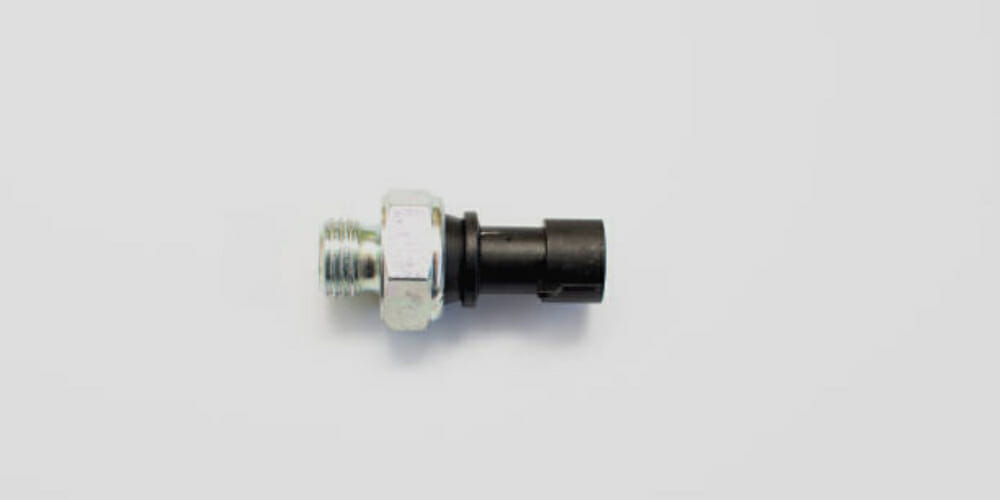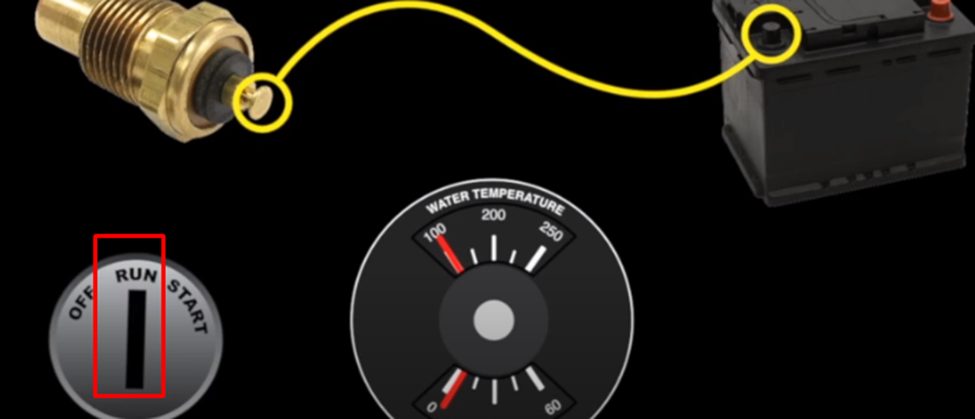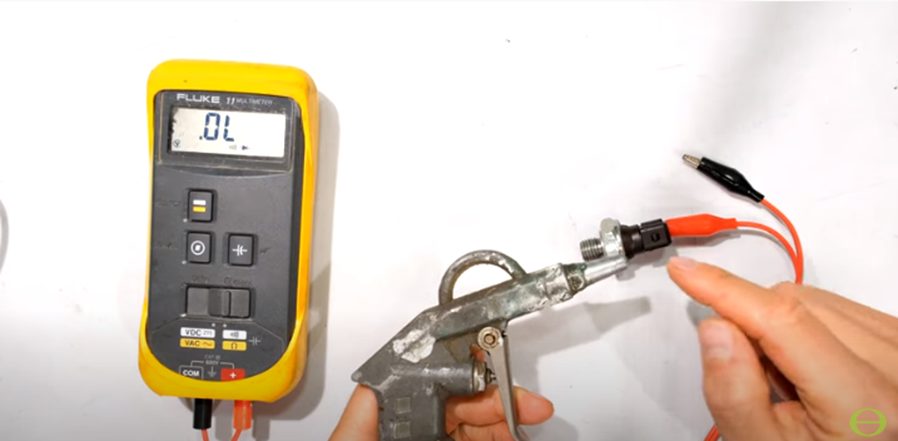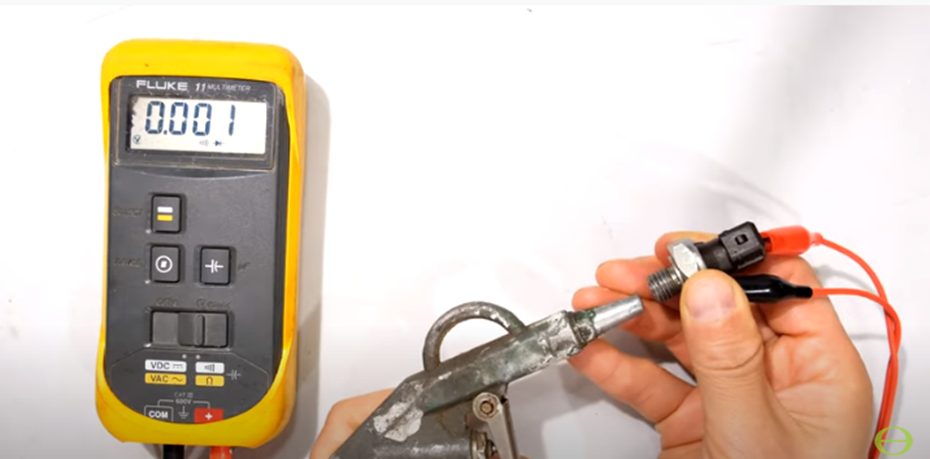How to Test Oil Pressure Sensor with Multimeter (In 3-Steps)

If your car uses a mechanical oil pressure switch and you notice that the warning light is on, we recommend that you check what the issue is. It may need that you service it or replace it altogether. While it can be disturbing to see a red warning light, you do not have to worry much.
That is because you can easily and quickly fix the issue. Sometimes, you may just have to replace the gasket and not the entire switch. An oil pressure sensor is a tool used for measuring the engine’s oil pressure in a vehicle.
It is an important tool that can protect the health of the engine of a vehicle. The sensor helps to control the pressure gauge of the oil in a vehicle. When there is an issue with the oil pressure, the sensor lights up as a warning.
It will indicate the issue and let the vehicle owner know what the likely issue is. Some problems that the pressure sensor can show include oil leaks, low oil pressure, or that the engine is consuming more oil than usual. If the sending unit is also faulty, the engine oil pressure sensor can also signal the issue by lighting up.
You can test the oil pressure sensor with a multimeter in three easy steps. Lock the engine out. Test the Resistance with the Engine Off. Test the Resistance with the Engine On. Check to see the type of oil pressure sensor your car has before you start.
3-Step Guide on How to Test Oil Pressure Sensor with a Multimeter
Before delving into the steps on how to test an oil pressure switch with a multimeter, let us cover briefly what the switch is. So, what is an oil pressure sensor? It is an on/off switch for the oil pump of a vehicle. The oil pump is linked with the oil filter housing and is turned on by the oil pressure switch. (1)
The sensor is designed to stop the oil flow when the pressure of the oil drops below some levels. It is built right into the oil filter housing, valve cover, or engine block. The oil pressure sensor is a crucial component of the engine of a vehicle.
Now, let’s look at why we would use a multimeter to test it.
A multimeter is the electrical testing device used for testing an oil pressure sensor. It is worth mentioning that the approach to testing a bad oil pressure sensor depends on the type of switch or sensor it is. The switches or sensors come with one, two, or three pins. Each is tested quite differently as indicated in the steps below:

Step 1: Lock the Engine Out
Ensure that you lock out the engine before testing. To do this, disconnect the battery from the vehicle. You do not have to remove it from the car. Simply disconnect it and proceed to the next step.
Step 2: Test the Resistance with the Engine Off
Now set the multimeter to size up the level of resistance or test if there is any closed or open circuit. To test resistance, connect one lead of the multimeter device to the warning light terminal on the engine oil pressure sensor. Next, put the second lead on the sensor housing.

If the pressure sensor is functioning normally, it will show a 0 ohms reading on the meter. Next, connect the lead to the metal housing or the terminal for the engine oil pressure sending unit. The meter’s reading should show that the circuit is open.
Step 3: Test the Resistance with the Engine On
The next step is to test the oil pressure sensor with the vehicle’s engine running. To do this, connect the switches. If the sensor is functional and there is oil pressure in the engine, the multimeter will read infinity on the switch terminal. This shows that the circuit is open.

Testing Process of Different Types of Oil Pressure Switches
As mentioned there are three types of oil pressure sensors. They are one-pin, two-pin, and three-pin switches. Let us look at each of them and how each is tested.
One-Pin Oil Pressure Switch
For a one-pin pressure sensor, you should connect the multimeter between the body of the pressure sensor and the pin. That is because it has only one connection on the pin. The other connection is through the switch’s body, which leads to the engine block.
The connection between the engine block and the switch’s body functions as the earth connection. The switch opens when the engine is running and closes when it is off. (2)
Two-Pin Oil Pressure Switch with One Pin as Ground
This switch type does not use its body as the earth connection because it has two pins. The same process for testing a one-pin switch applies to testing a two-pin pressure switch. All you have to do in this case is connect the multimeter between both pins. The switch opens when the engine is running and closes when it is turned off.
Two-Pin Oil Pressure Switch with One Pin Normally Open and One Pin Normally Closed
This type of oil pressure sensor will have one of its pins closed and the other open when the oil pressure is low. The pin will change its position when the oil pressure rises in the engine.
Three-Pin Oil Pressure Switch
This has two pins that alternate positions like the two-pin oil pressure sensor with one pin open and one pin closed and a standard connection like the body. It is a bit intricate to test oil pressure that is three-pin when compared to the other two.
You must know the specific pin that should be opened, the one that should be closed, and the one that is ground before you can test it. When you are sure of these three points, you can connect the multimeter between the common pin and the usually closed pin. Ideally, the circuit should be open when the engine is running and closed when it is turned off.
FAQs
How Do You Reset an Oil Pressure Sensor?
You can reset the oil pressure sensor to make it work more effectively. The good news is that it is easy and fast to reset it. Follow the steps below to get it done quickly:
Step 1: Insert the car key into the ignition and switch it to the “on” position. Do not start the engine though. You will see that the engine pressure sensor light is on.
Step 2: Push down on the gas pedal slowly about three times to reset the oil pressure sensor.
Step 3: Now turn off the ignition and on again to see if the reset is successful.
Wrapping Up
Keeping the oil pressure switch in optimal working condition is crucial to ensuring the safety of your vehicle and the lives of all riders. Just like other vehicle parts, the oil pressure sensor is a part that requires regular maintenance.
Without it, it will be difficult to monitor the pressure of the oil in the engine. We recommend that you test the oil pressure sensor regularly. If the oil pressure in a vehicle is low, it can lead to friction between several engine parts.
This in turn can cause a major decline in the performance of the engine and can ultimately damage the engine. In this post, we have looked at a detailed step-by-step guide on how to test an oil pressure sensor with multimeters.
Take a look at some of our related articles below.
- How to check knock sensor with multimeter
- How to test a furnace pressure switch with a multimeter
- How to test crankshaft position sensor with a multimeter
References
(1) oil pressure – https://www.sciencedirect.com/topics/engineering/oil-pressure
(2) body functions – https://training.seer.cancer.gov/anatomy/
body/functions.html
Video Reference
